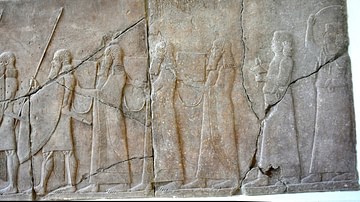Embarking on a journey through the annals of time, we delve into the vibrant tapestry of festivals that once adorned the ancient land of Mesopotamia. These sacred celebrations were not mere spectacles; they were profound expressions of a civilization steeped in rich cultural heritage and spiritual devotion.
A Glimpse into Divine Revelry
In this realm where gods and mortals intertwined, festivals served as conduits for communing with deities and seeking their blessings. From grand processions to elaborate rituals, these gatherings brought together people from all walks of life to honor their divine patrons.
One such festival was Akitu, an awe-inspiring event marking the New Year. With its roots stretching back thousands of years, Akitu symbolized renewal and rebirth. The festivities unfolded over twelve days, during which priests performed intricate ceremonies while citizens engaged in joyous revelry.
Another notable celebration was Zagmuk, dedicated to Marduk—the patron deity of Babylon—whose victory over chaos ensured order in the world. This momentous occasion involved dramatic reenactments depicting Marduk’s triumph alongside spirited music and dance performances that echoed through city streets.
An Intricate Weaving of Tradition
Mesopotamian festivals were not only religious but also social events that fostered unity among communities. They provided opportunities for individuals to connect with one another beyond societal divisions—a testament to the inclusive nature ingrained within these ancient cultures.
The Ishtar Festival exemplified this spirit by honoring Ishtar—the goddess associated with love and fertility—and celebrating femininity in all its forms. During this jubilant affair, women played pivotal roles as priestesses who led processions and engaged in sacred rituals, highlighting the significance of gender equality within Mesopotamian society.
Moreover, these festivals were not confined to urban centers but extended their reach to rural areas as well. The Barley Harvest Festival, for instance, paid homage to Ninkasi—the goddess of beer—and marked the culmination of a successful agricultural season. It brought together farmers and artisans alike, fostering a sense of camaraderie that transcended geographical boundaries.
A Bittersweet Farewell
As we bid adieu to this captivating journey through ancient Mesopotamian festivals, we cannot help but feel a tinge of remorse for the loss of such vibrant cultural traditions. These celebrations served as pillars upon which communities thrived—nurturing bonds between individuals while honoring their gods with unwavering devotion.
Let us remember these remarkable festivities as testaments to human creativity and resilience—a reminder that our collective history is woven from threads spanning countless generations. May they inspire us to cherish our own cultural heritage and embrace diversity in all its forms.
